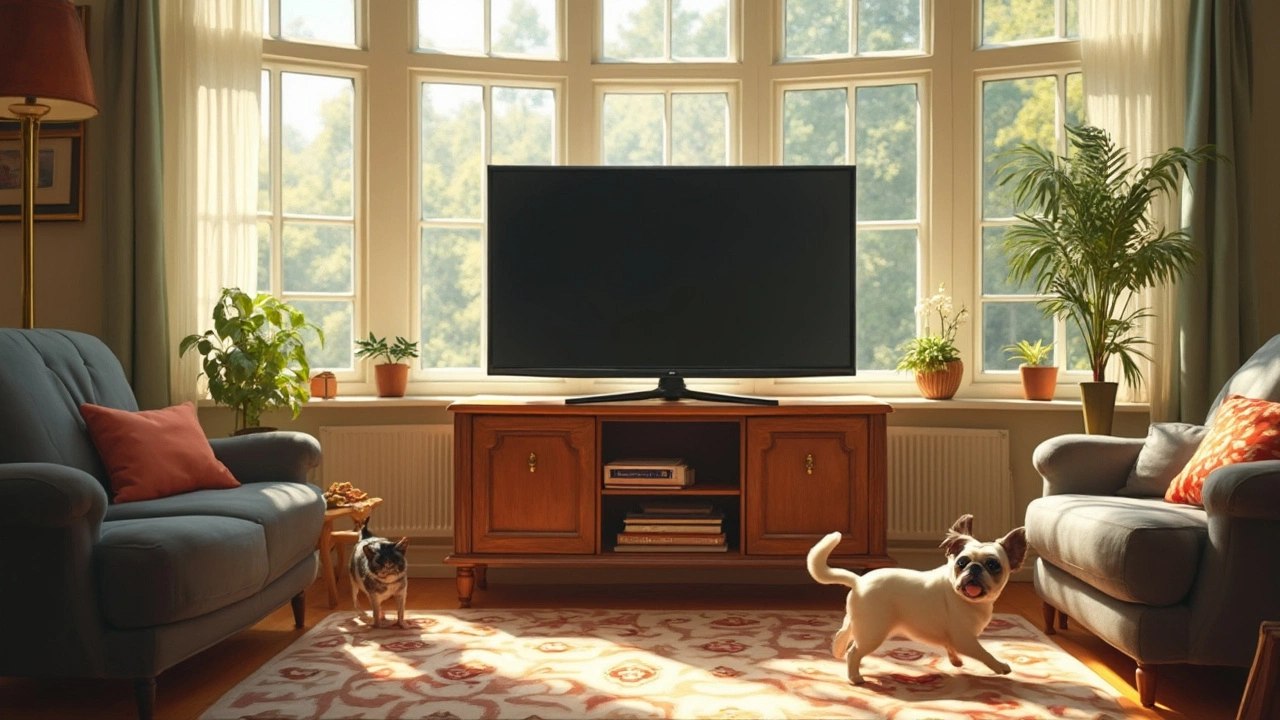TV Wall Mount Guide: How to Pick, Install, and Place Your TV Right
Thinking about taking your TV off the stand and putting it on the wall? You’re not alone. A wall mount can free up floor space, look cleaner, and give you a cinema‑like feel. But the process isn’t just about screwing a bracket to the wall – the wrong spot or a weak mount can cause damage or an unsafe setup. Below are the steps and tips you need to get it right the first time.
Choosing the Right Mount for Your TV
First, match the mount to your screen size and weight. Most mounts list a range, like “32‑65 inches, up to 70 lb.” Check the VESA pattern on the back of your TV (the distance between the mounting holes) and buy a bracket that fits those measurements. Fixed mounts keep the TV flush to the wall, while tilting mounts let you angle the screen down – handy if you’re mounting high. Full‑motion arms let you pull the TV out and swivel, perfect for rooms where you watch from multiple spots.
Don’t forget the wall type. Stud walls (wood joists) give the strongest hold. If you have a brick or concrete wall, you’ll need masonry anchors. A cheap mount that only uses drywall anchors may hold a 55‑inch TV for a few weeks, then wobble. Investing a bit more in a quality mount saves headaches later.
Where NOT to Mount Your TV
Location matters. Avoid placing the TV right above a fireplace unless the heat is well‑ventilated – excess heat can damage the panel. Also, steer clear of windows or bright light sources that cause glare. Make sure the viewing height is comfortable; a good rule is to have the screen’s center about eye level when you’re seated. If you’re unsure, sit on your couch and hold the TV at different heights to see what feels natural.
Another common mistake is mounting too close to a door. People often walk right into the TV when exiting a room. Leave at least a foot of clearance on either side. Finally, check for any hidden wiring or plumbing in the wall before you drill. A stud finder with a live‑wire detection feature can save you from costly repairs.
Once you’ve picked the right mount and spot, gather the tools: a drill, level, screwdriver, stud finder, and the appropriate screws or anchors. Mark the stud locations, level the brackets, and drill pilot holes. Tighten the bolts firmly, but don’t over‑tighten – you could strip the wood. Hang the TV onto the bracket according to the manufacturer’s instructions, then double‑check that it’s secure before letting go.
After the TV is up, run the cables behind the wall if you can. This makes the setup look neat and reduces tripping hazards. If you’re not comfortable cutting drywall, surface‑mount raceways are a cheap and easy alternative.
With the mount installed, you can fine‑tune the viewing distance. A general guideline is to sit about 1.5 times the screen’s diagonal away – for a 55‑inch TV, that’s roughly 6.8 feet. Adjust based on personal preference and room layout.
Bottom line: choose a mount that fits your TV’s size and weight, pick a stud‑backed spot away from heat and glare, use the right fasteners, and check everything twice before you let go. Follow these steps and you’ll enjoy a clean look, extra space, and a safe viewing experience for years to come.
How Can I Support My TV Without a Stand? Smart Alternatives That Actually Work
Worried about what to do with your TV after losing the stand? You’ve got more options than you might think. This article covers practical ways to support your TV without its original stand, using solutions from wall mounting to household hacks. Learn how to keep your screen safe, steady, and stylish — even if your pets love to zoom around the living room. No need for fancy tools or special skills; real tips for real homes.
More
